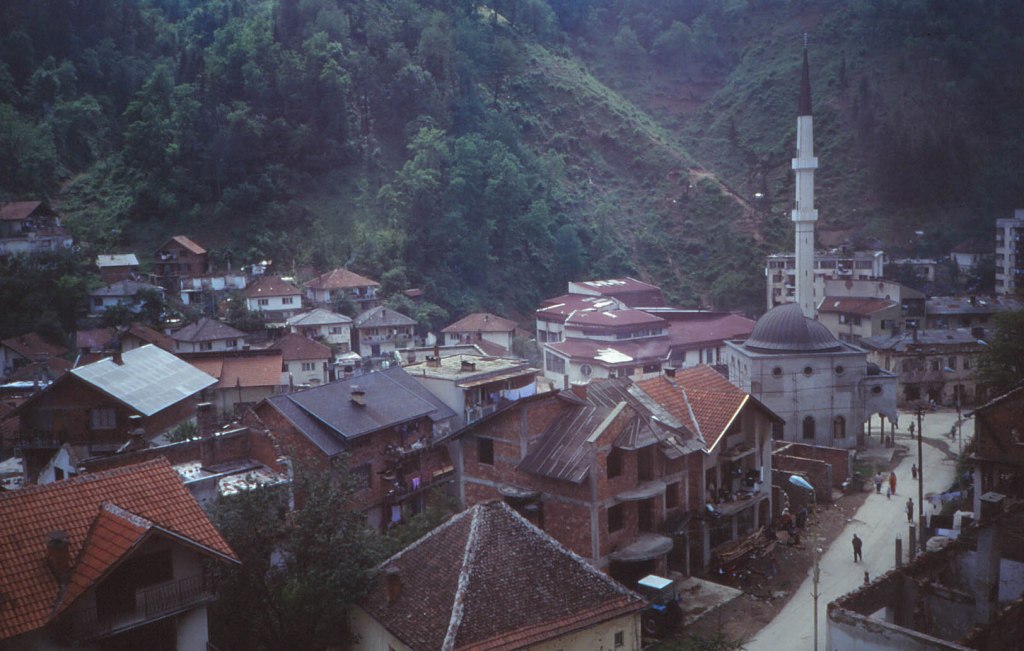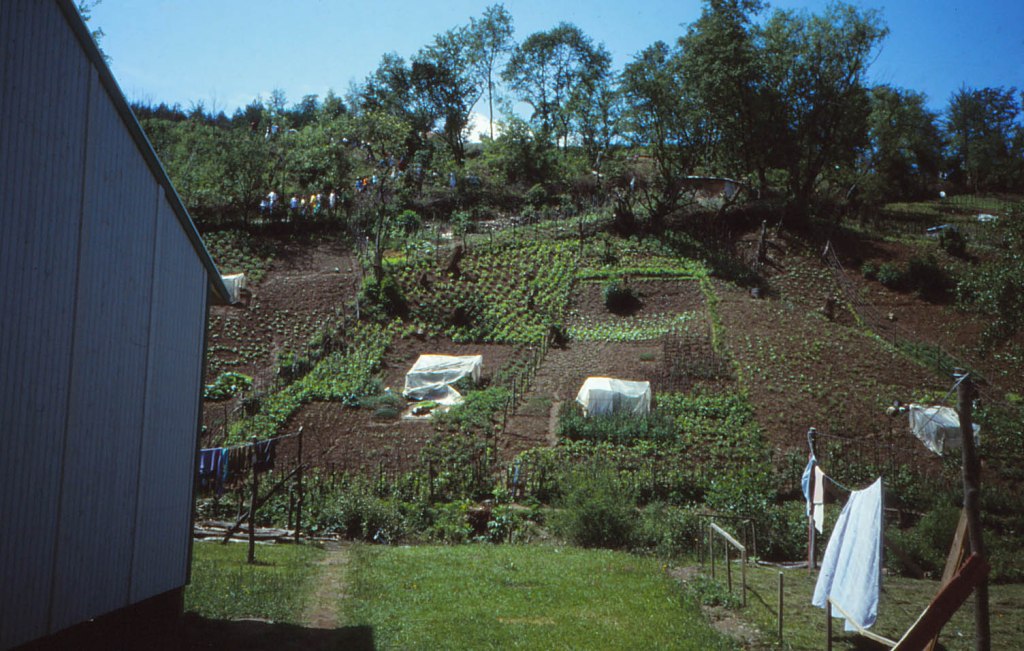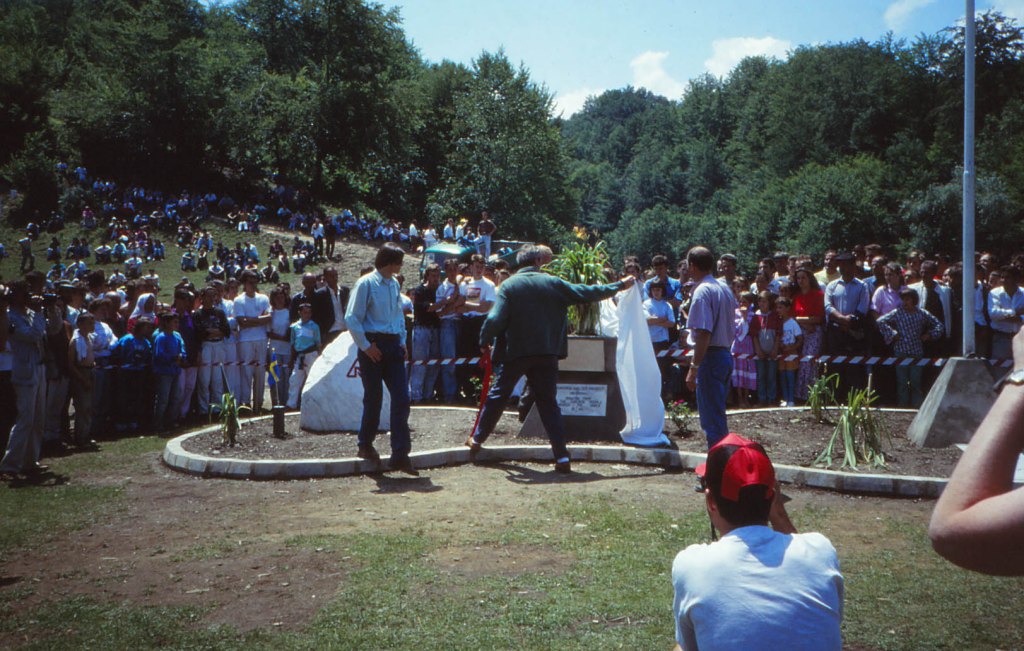Srebrenica
The following pictures were mainly taken in July 1994, when Björn was hired to follow up on Swedish support to the Balkans during the war. He later visited Srebrenica on several ocassions.
More than 30,000 people lived in Srebrenica in 1994, which before the war had a population of around 4,500.
Many of the houses had been damaged by the war, as can be seen in the background. Some estimated that there were only around 1 m2 of living space per person in 1994.
Some house roof were temporarily repaired by the Swedish Rescue Services Agency, SRSA.
A common sight on apartment blocks, chimneys from wood burning stoves. There was no running water nor any electricity in Srebrenica in 1994.
The SRSA built 320 prefabricated houses in a valley some 8 km outside the city. These could house 3,300 persons. Construction was extremely difficult, as there were severe restrictions regarding what material that could be brought in to Srebrenica. Cement and reinforcement iron to be used for foundations were classified as war material and was not allowed to pass the Bosnian-serb checkposts into Srebrenica.
The houses were produced in Sweden, transported by train to Belgrade, and then by truck convoys to Srebrenica. In the foreground a water post.
Simple paths were built. House foundations were made of pressure impregnated wood boards placed directly on the ground.
Gardens for vegetable production.
The official opening ceremony when construction had been completed, July 1994. Please note the marble stone to the left, as it will re-appear on the last picture.
Singing and dancing at the ceremony.
SRSA did a tremendous job when building the houses, “employing” many of the refugees in Srebrenica to work on building the houses. The villages was totally abandoned in July 1995, when Srebrenica fell on 11 July. All houses were intact, except one house that had a few damages from a mortar. One building was damaged by fire, the house that had been used as a mosque by the Bosniaks.
Some months later, Bosnian-serb refugees moved into these houses. Some came from Sarajevo, some from Donji Vakuf in NE Bosnia.
The same view of the valley, but taken in June 1999. There is a meadow on the hill to the right, which can be seen on the previous picture as well. All houses were moved in 1996 by the Bosnian-serb refugees, as they were unhappy to stay so far away from town. It was 8 km “as the bird flies” from the valley to Srebrenica center.
The prefab houses were moved to eight different locations, some near Srebrenica and many to Bratunac. Some of the Bosnian-serbs came from Donji Vakuf and had worked at a factory producing prefab housing. Their skills probably helped to dis-assemble all the 320 houses in the valley and then re-assemble them closer to urban areas. They did a great job and took well care of the buildings.
The picture shows a few of theses buildings used by Bosnian-serbs. One of them is talking to Muhammed (to the right), who used to live in Srebrenica and who worked as an interpreter for SRSA.
Muhammed by the stone seen on the picture from the opening ceremony. The stone is the only trace left of the “village” of 320 houses.














Please contact Me by mail. It’s about Swedish Shelter Project greetings
We have tried to contact you but have not had a reply. Please write again if you are still interested.